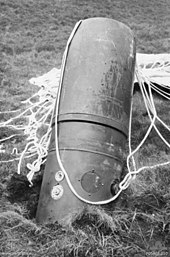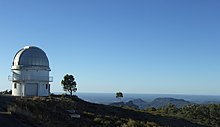Harrie Massey
Harrie Massey | |
|---|---|
G.D. Allam |
Sir Harrie Stewart Wilson Massey
A graduate of the
Massey returned to University College London, in October 1945 to find it badly damaged by bombing, and the Mathematics Department in dingy temporary accommodation. In 1950 he was appointed
Early life
Harrie Stewart Wilson Massey was born in Invermay, Victoria, Australia,
Career
At the age of 16, Massey won a scholarship to the
At that time, the university did not offer a

In 1929, with the benefit of an Aitchison travelling scholarship from the University of Melbourne, Massey went to
Fowler was appointed as Massey's supervisor although it was clear that he did not need any supervision per se. Massey obtained his PhD on The Collisions of Material Particles in 1932.
In June 1933 Massey became an independent
Massey was appointed Goldsmid Professor of Applied Mathematics at
Second World War

Soon after the outbreak of war in September 1939, the Germans began a
In December 1939, Massey joined a group at the Admiralty Research Laboratory in Teddington led by Stephen Butterworth. They were soon joined by a number of other physicists, including Bates, Buckingham, Francis Crick and John Gunn. Together, they came up with a series of countermeasures that enable the Navy to successfully sweep the mines. With this in hand, Massey became Deputy Chief Scientist to the Scientific Section of Mine Design Department at the Admiralty Mining Establishment in Havant in early 1941. This time, the job was to create mines as good as the German ones. Massey brought his team with him. While Bates worked on packaging to protect the mine when it was dropped from an aircraft, Buckingham and Gunn calculated its theoretical effectiveness, and Crick designed the circuitry. Their mine codenamed MX, was soon in service, and the group turned its attention to developing acoustic or pressure mines. On the retirement of A. B. Wood in 1943, Massey became Chief Scientist at Havant.[1]
After the August 1943
Later life
Massey returned to University College London, in October 1945 to find it badly damaged by bombing, and the Mathematics Department in dingy temporary accommodation. He was allowed to pick his own lecturers, so he chose Bates, Burhop, Buckingham and Gunn. While they had to teach mathematics, they were free to choose their own research topics, so they chose to research physics, carrying out physical experiments.[1] This situation lasted until 1950, when Edward Andrade retired, and Massey was appointed Quain Professor of Physics and head of the University College London, Physics Department.[8] The department was merged with Astronomy in 1973, but he remained its head until he retired in 1975.[20][21] He also served as University College London's Vice-Provost from 1969 to 1973.[2]

When Massey took over the Physics Department, most of his physicists, including Bates, Buckingham, Burhop and
Elected a

Space science also gave Massey an excuse to visit Australia; he made some twenty trips. He was involved in the testing of balloons for upper atmosphere research at the University of Melbourne's site in
Massey received honorary doctorates from both Queens University Belfast (1955)[26] and Heriot-Watt University (1975).[27]
Death and legacy
After a long illness, Massey died at his home in
Hoddles Creek Primary School, the state school attended by Massey during his childhood, named Massey House (one of the school's four houses) in his honour. A pine tree planted by Massey on the school grounds in 1937 remains, as well as a plaque commemorating Massey's achievements.
Bibliography
- OCLC 537272.
- Massey, Harrie Stewart Wilson (1938). Negative Ions. Cambridge: Cambridge University Press. OCLC 251611666.
- Massey, Harrie Stewart Wilson; Kestelman, H (1958). Ancillary Mathematics. London: Sir Isaac Pitman and Sons Ltd. OCLC 10396901.
- Massey, Harrie Stewart Wilson (1956). Atoms and Energy. New York: Philosophical Library. OCLC 2337212.
- Massey, Harrie Stewart Wilson; Boyd, R. L. F. (1958). The Upper Atmosphere. London: Hutchinson. OCLC 511957.
- Massey, Harrie Stewart Wilson (1966). The New Age in Physics. New York: Harper. OCLC 530595.
- Massey, Harrie Stewart Wilson; Quinton, Arthur Robert (1961). Basic Laws of Matter. Bronxville, New York: Herald Books. OCLC 1347311.
- Massey, Harrie Stewart Wilson (1964). Space Physics. Cambridge, England: University Press. OCLC 340105.
- Massey, Harrie Stewart Wilson; OCLC 537272.
- Massey, Harrie Stewart Wilson (1966). Space Travel and Exploration. London: Taylor & Francis. OCLC 2423098.
- Massey, Harrie Stewart Wilson (1976). Negative Ions. Cambridge: Cambridge University Press. OCLC 2339571.
- Massey, Harrie Stewart Wilson (1979). Atomic and Molecular Collisions. London: Taylor & Francis. OCLC 4832392.
- Massey, Harrie Stewart Wilson (1982). Applied Atomic Physics Processes. Academic Press. ISBN 0-12-419951-8.
- Massey, Harrie Stewart Wilson; Robins, Malcolm Owen (1986). History of British space science. Cambridge University Press. ISBN 0-521-30783-X.[33]
Notes
- ^ Bibliographical Memoirs of the Royal Society says he was born in St Kilda, Victoria,[1] but the Australian Dictionary of Biography says Invermay, Victoria.[2]
References
- ^ S2CID 71258564.
- ^ ISSN 1833-7538. Retrieved 28 February 2015.
- OCLC 426938310.
- ^ "Harrie Massey (Deceased)". Royal Commission for the Exhibition of 1851. Retrieved 1 March 2015.
- ^ Harrie Massey at the Mathematics Genealogy Project
- ^ Massey, Harrie Stewart Wilson. "The Collisions of Material Particles". University of Cambridge. Retrieved 7 March 2015.
- Bibcode:1984QJRAS..25..530S.
- ^ a b "Obituary: Professor Sir Harrie Massey". The Times. London. 2 December 1983. p. 18.
- JSTOR 20490736.
- .
- S2CID 96039164.
- .
- S2CID 97373737.
- ^ a b Roskill, S. W. (1954). The War at Sea, 1939–1945. Vol. 1, The Defensive. London: H.M.S.O. p. 100.
- ^ Sainsbury, A. B. (4 May 1993). "Obituary: Commander J. G. D. Ouvry". The Independent. Archived from the original on 9 May 2022.
- ^ ISBN 978-0-9594164-0-4.
- S2CID 123018692.
- ^ "Eric H. S. Burhop interviewed by Hazel de Berg for the Hazel de Berg collection". National Library of Australia. Retrieved 25 February 2015.
- OCLC 552825.
- ^ doi:10.1093/ref:odnb/31419. (Subscription or UK public library membershiprequired.)
- ^ "50th Anniversary of the UK's first step into space". University College London. 26 April 2012.
- ^ Grozier, Jim. "A History of Early High Energy Physics Research at UCL – The Microtrons". University College, London. Retrieved 1 March 2015.
- ^ "No. 41953". The London Gazette. 12 February 1960. p. 1081.
- ^ "APS Member History". search.amphilsoc.org. Retrieved 1 August 2022.
- ^ Fox, J. W. "From Lardner to Massey". University College, London. Retrieved 7 March 2015.
- ^ Belfast Telegraph 7 July 1955
- ^ "Heriot-Watt University Edinburgh: Honorary Graduates". www1.hw.ac.uk. Retrieved 7 April 2016.
- ^ "Prizes and Awards". Harvard-Smithsonian Center for Astrophysics. Retrieved 2 March 2015.
- ^ "Harrie Massey Lecture Theatre". University College, London. Retrieved 2 March 2015.
- ^ "Harrie Massey Prize". University College, London. Retrieved 2 March 2015.
- ^ "Harrie Massey Medal and Prize". Australian Institute of Physics. Archived from the original on 16 July 2014. Retrieved 2 March 2015.
- ^ "Sir Harrie Massey Papers". University College London. Retrieved 7 March 2015.
- .
